Austria
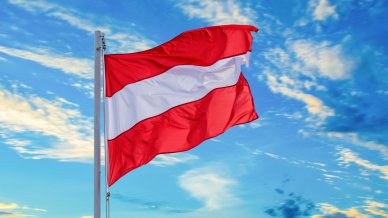
Austrian flag
The country of magic symphonies by Mozart and waltzes by Strauss, famous Wiener schnitzels, and amazingly tasty desserts.
A magnificent mountain ski resort and an incredibly beautiful corner of Europe. That is the way how everyone lucky enough to visit Austria recalls it.

General Information
One of the most developed European countries commenced its history more than a thousand years ago, and the first mention about it appeared in the documents of the 10th century. A simple German name for Austria ‘Österreich’, which means ‘eastern realm’, has been used since ancient times.
Historical Background
There was a time when the lands of modern Austria were inhabited by the Slavs and Bavarians. First, they gave the name to the duchy, and in a couple of centuries - to a free republic that now is a part of Germany.
In the 9th century, those lands were recaptured by Franks. Hundred years later, a new country and modern Austria’s predecessor, the Margraviate of Austria, appeared. Initially, it was ruled by the Bavarian vassals, but in the 12th century, the march’s status became much higher. Holy Roman Emperor Frederick Barbarossa, issued the Privilegium Minus, according to which the march was elevated to a duchy.
The Dutchy existed till 1806 and underwent several wars and recompositions of territory. Its possessions extended owing to the annexation of the Czech Republic, Croatia, and some regions of Poland. Though Silesia was excluded from the Dutchy’s territory, it was again included in the Austrian territories later. In the 17th century, Hungary joined the union.
After the end of the Holy Roman Empire in the 19th century, the German Confederation was founded. It was a political and economic formation of German-speaking countries where Austria was an empire itself. Austrian emperors had retained the presidency for several decades until the Confederation dissolved.
The defeat in World War I entailed the collapse of Austria-Hungary and the dissolution of the Empire. In November 1918, the Reichsrat announced the transition to the republic model of government.
Former Austria-Hungary disintegrated into three sovereign states. The regions with a predominantly German-speaking population formed the Republic of German-Austria. Hungary became the Hungarian People’s Republic. And the Czech lands of Moravia, Bohemia, and Silesia united into Czechoslovakia.
Austria was annexed into Nazi Germany in 1938 (Anschluss).
The basis for that had been prepared before. A vast majority of Austrian Germans had aspired to the revival of Großdeutschland, so the plebiscite results confirmed the ‘legality’ of their will.
When World War II ended, the USSR and Western countries began their fight for Austria and attempted to entice it into following their own paths. Nonetheless, neither of the parties managed to achieve its aim.
Austrian government declared the policy of neutrality and demanded to withdraw all the foreign troops from its territory. And neutrality has remained the key element of Austrian foreign policy up to the present: the country has not still joined any military alliance.
During the post-war period, Austria was dynamically developing. So at the end of the 20th century, it became one of the most successful post-industrial states in Europe. Though the country has been the European Union member state since 1995, the attitude of the majority of Austrians towards the EU membership cannot be called approving.
Geography and Climate
Almost the entire territory of Austria is mountainous: the Alps cover more than 70% of its lands. There are the Eastern Alps (the longest line), Tyrol Alps, Salzburg Alps, Zillertal Alps, and the Carnic Alps.
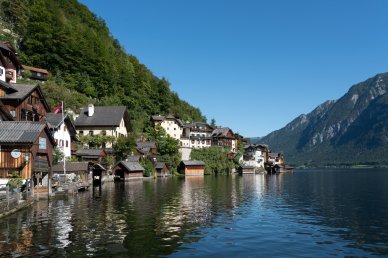
Hallstätter See or Lake Hallstatt, Austria
Seasonal temperatures and the number of precipitations are inversely proportional to the height in various localities. The higher the cities and villages are located in the mountains, the colder the air becomes and the more snow and rain tend to fall. For example, the winter temperature within the Austrian plains rarely reaches more than -2°C or -3°C whereas -15°C or -17°C is a normal temperature for the mountainous regions. Summers are usually mild with an average temperature of +20°C and occasional rains.
In general, the Austrian climate is mild without extreme weather events.
Population, Language, and Currency
The population of nine Austrian states is around 9 million people. More than 25% constitute migrants who have settled here because of wars or division of territories.
Most of the migrants arrived from the Balkans during ethnic conflicts in Yugoslavia. There are also the communities of the Turks and Kurds. Ethnic minorities like the Czechs, Slovaks, Hungarians, and Croats live here as well. Neither indigenous people nor the country’s government is in favour of immigration. Despite the strict requirements imposed by the European Union, Austria almost ignores all of the proposed quotas for refugee resettlement.
German is only one official language, but it is much different from the one spoken in Germany.
The official currency is the euro.
Directions
Getting to Austria is possible by bus, train, plane, or car. The quickest way for European travellers is a direct flight, which will not take much time and money.
There are direct trains from the Czech Republic, Slovakia, Switzerland, Hungary, and Germany.

Accommodation
In Austria, the hospitality industry has already reached the level of perfection, and tourism revenues eliminate the trade deficit. Every visitor to a country, be it an ordinary tourist or a business person, will find accommodation according to their preferences and budget.
Austrian hoteliers offer rooms in hotels of various star-rating that cost €50 per night and higher. A crowd of lively youths will always be able to find a hostel. The price range begins with €20. The conditions are good enough: clean rooms, coffee machines, the Internet, and Wi-Fi.
Those willing to immerse in the local charm will enjoy clean rooms in family-run guesthouses where tasty homemade food is served. Suites in mountain villages hidden behind well-maintained hedges are particularly enchanting.
There are several hotels with cafes and restaurants at every mountain ski resort. It is also possible to rent a room or an entire house from local residents.
Below are several accommodation options available in Austrian hotels and hostels:
- Hotel Evido Salzburg City Center is a three-star hotel located a 15-minute walk from Salzburg city centre. The facilities include comfortable furniture, separate bathrooms with hairdryers, air-conditioning, modern TV sets, and free Internet.
- All Suite is a four-star hotel in the centre of Innsbruck located 1.5 km from the lake and chairlift. Stunning views of the mountains are visible from balconies and terraces. Wi-Fi, restaurant, and parking are available as well.
- Pension Gasser (Zillertal) is a perfect option for a group of tourists or a whole family with children where up to eight people may be accommodated at one time. This three-star suite situated in the resort district consists of seven rooms, five of which are bedrooms, and four are bathrooms. Shopping malls and restaurants are located within walking distance.
- Romantik Chalet Karin is a cosy two-level chalet in Innsbruck located within 4 km distance from the chairlift. The area is 130 square metres and comprises six bedrooms, two bathrooms, and a kitchen with all the necessary devices and kitchenware. The chalet may accommodate up to ten people.
- Stöcklhof is a four-star holiday house in Arlberg with a bedroom, a sitting room, and a bathroom. It is a historical building aimed at accommodating two people. Shops, restaurants, bakery, and grocery stores are located nearby. Farm products are also available.
Letting websites offer various options of renting accommodation in Austria like separate apartments, suites, houses, and rooms, prices of which vary by the price set by property owners. The renting period may last a month or longer. For example, https://www.airbnb.co.uk/austria/stays will be a very useful website to find a suitable place.
Places to See
Austria is stunning. This statement is as true as the one about two parallel lines that never intersect. Austrian beauty unveils to each visitor differently. Sports lovers are crazy about mountain ski resorts. Admirers of classical music and theatre savour wonderful performances. Those who have a sweet tooth are ready to spend hours sitting in atmospheric Viennese confectionaries to taste the finest desserts.
Those in favour of ordinary rural vacation take terabytes of photos and videos in miraculously beautiful villages.
And the ones who adore feasting their eyes with picturesque views immerse in their own nirvana of contemplating the Alpine lakes, waterfalls, and forests.
So what are the places to see in Austria? An obvious start should be its capital - Vienna. Each building there is an architectural masterpiece. Each square has witnessed a multitude of dramatic events during the age-old history of one of the most attractive European cities.
Vienna
Acquaintance with the Austrian capital should start with its squares. City Hall Square is a place where the Viennese used to gather to listen to important orders of the authorities. At present, Christmas fairs are held there every year.
Schwarzenbergplatz comprises several attractions of the capital at once: the University of Technology, the Museum of Fine Arts, and Karlskirche (Karl’s Church). Fountains are of peculiar beauty.
Schönbrunn is the emperor’s palace surrounded by magnificent gardens and parks. It is one of the most astonishing buildings in Vienna. Guided tour tickets cost €20 for adults, and €12 for children.
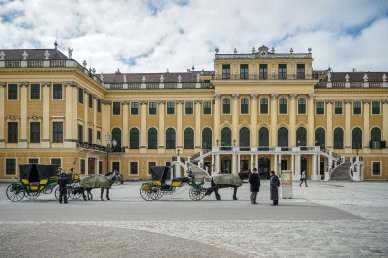
Schönbrunn palace, Vienna
Vienna State Opera is admirable per se as an example of Neorenaissance architecture even though you may not be the opera connoisseur. Those who do appreciate this type of art will need to have enough savings to purchase an admission ticket or to pay for a standing spot 90 minutes in advance. In any case, you will have unforgettable memories.
Hofburg is the other imperial residence where memorabilia of the Habsburgs, the Austrian rulers, are kept. Now it is the seat of the President of Austria. A guided tour of Hofburg costs €15.
Walk the streets of the Museumsquartier with its bohemian atmosphere. Take a trip to Kunsthalle - one of the best exhibition halls in Vienna, and attend the Museum of Modern Art. Take immense pleasure in wandering the old streets of the capital city. Vienna is considered one of the most beautiful cities in the world, and for good reason.
Salzburg
Land Salzburg and its capital city constitute a large cultural centre of Austria. The local number one attraction is Mozart’s birthplace on Getreidegasse Street where a prominent Austrian was taking his first steps.
Spectacular guided tours are offered to have a look at Hohensalzburg Fortress with its legendary “Salzburg Bull” - a 15th-century organ, Saltzburg Cathedral, Mirabell Palace, and Baroque Museum.
You may also attend the only museum of Celtic culture in Europe called Keltenmuseum located in Hallein, the locality of the salt mines of Bad Dürrnberg.
Tyrol
It is a state in Western Austria with the capital in Innsbruck, which is a favoured place for tourists from all over the world. The city hosted the Winter Olympic Games in 1964, 1976, and 2012. The latter ones were the first Youths Olympics. At present, Innsbruck is one of the most famous mountain ski resorts in Europe.
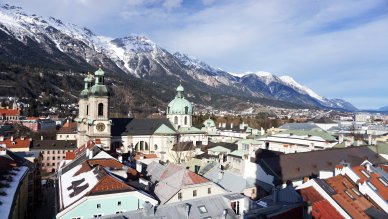
Innsbruck, the capital of the Austrian state of Tyrol in the west of the country
Tourism in Tyrol is a peculiar revenue item that increases the land budget by 20%. A vast majority of tourists come from neighbouring Germany. The explanation is very simple: the Tyroleans and Bavarians are like-minded people that speak one but different language.
There is much to see in Tyrol even for the most experienced travellers. In Innsbruck, there are at least three must-see places:
- Hofburg is one more imperial palace of the Habsburgs that had been constructed for five centuries.
- Golden Roof is the city’s legend and symbol. The balcony, decorated with fire-gilded copper tiles, emerged as an extension of one of the buildings on Archduke Friedrich’s Street during the rule of Emperor Maximilian. The construction was dedicated to the Emperor’s wedding.
- Tratzberg Castle is the main attraction of Stams. It is an example of a Rennaisance style with armoury and weapon exhibits.
Yodeling is a peculiar type of singing that has made the Alps residents world famous. And the yodeling festivals are the reason to visit Innsbruck for everyone fond of Austrian folk music and traditions.
Tyrolean Evenings is a fascinating 90-minute performance held by the Gundolf Family since 1967. The atmosphere of a joyous folk fest creates unforgettable memories about singers showing their talents in a unique singing pattern, the bright costumes with Tyrolean hats, dances, and laughter.
Food
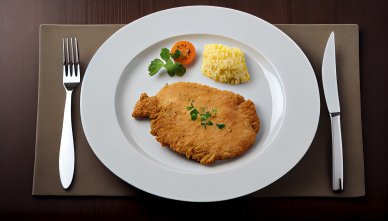
The photo is illustrative
Bavarian thoroughness and Viennese delicacy are the two main features of Austrian cuisine. People here like plain but filling food, the recipes of which emerged in the countryside kitchens.
The other neighbours of this Alpine country have also added to the image of its gastronomic splendour. Hungarians introduced goulash, and the Czechs offered their fleckerln (pasta with cabbage and bacon).
The menus of Austrian homes were complemented with savoury and spicy German sausages. For example, well-known Austrian sausages have a German origin and are called Frankfurters.
Wiener schnitzel is a specialty that has made Austrian chefs world known. It is a huge juicy and savoury piece of veal fried in crispy breadcrumbs. Even no garnish is needed because schnitzel is just served on a plate dressed with a slice of lemon.
Refinement and easiness are the features that Austrian cuisine has obtained. Actually, that stems from the chefs of countless imperial residences, and as a result, Austrians have learnt how to cook the favourite dish of their Emperor Franz Joseph. He liked tafelspitz most of all - a tender beef in onion sauce with apple horseradish. Delicious Austrian desserts also have an imperial origin.
A number one dessert of Austrians is apple strudel. Though this layered pastry with an apple filling seems easy to cook, much experience and mastery are needed to make it.
Only the most talented chefs can make the filling tender and the dough melt in the mouth. If you want to try a piece of strudel, visit one of the numerous coffee shops in Vienna, Salzburg, Linz, and other cities and towns of Austria. There you will be offered a cup of black coffee or coffee with milk. There are dozens of coffee types that Austrians drink.
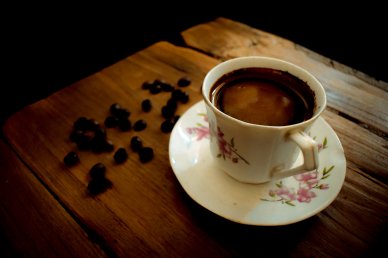
The photo is illustrative
Brauner should not be confused with brownie because it is a small cup of freshly brewed coffee with milk. If a cup of coffee is big, Austrians call it ‘grosser’. Ordinary black coffee is called ‘schwarzer’.
A cup of hot chocolate is as popular and favoured by Austrian residents as Viennese coffee with milk is. However, it is drunk more often during Christmas time to warm up in cold winter evenings.
The other legendary dessert is Sacher cake. A right triangular piece of biscuit with chocolate cream and indispensable apricot confiture is served at any Viennese confectionary. There are thousands of recipes, but a true Sacher can be tasted only in the Austrian capital.
Spirits in Austria are highly appreciated. As well as Germans, Austrians love beer most of all. Malty Lager has been their irreplaceable favourite for several centuries. They drink Pils when want something stronger. It is a pale but headier beer of Czech origin. Each of more than a thousand of its types brewed has a very unique marvelous taste.
Austria is a quiet paradise of old Europe where age-old traditions are coupled with the latest technologies, and passion for perfection has been considered absolute. So if you want to relax the mind and simply enjoy the surrounding beauty, visit this country.







